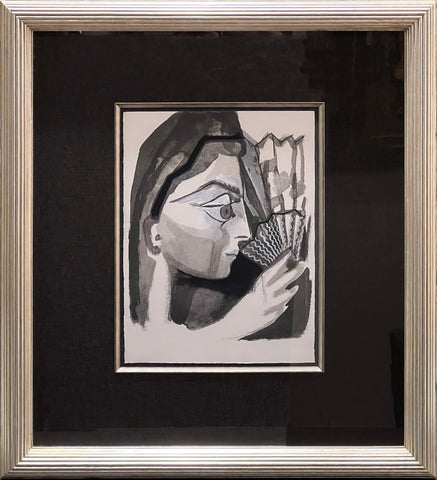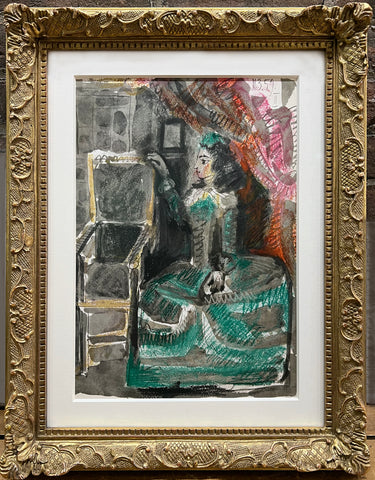Grande Femme et Petit Homme Ventru
$ 6,500.00
This product is currently sold.
Pablo Picasso (1881 - 1973)
Grande Femme et Petit Homme Ventru
Plate 37 from La Serie 156 (B. 1892; Ba. 1898)
etching and drypoint, 1970, on BFK Rives, with the artist's stamped signature
numbered 17/50
published by Galerie Louise Leiris, Paris
8 1/8 x 5 7/8 inches; 206 x 149 mm.
Sheet 12 7/8 x 9 7/8 inches; 327 x 251 mm.
Custom framed in a hand finished glazed 12k white gold cassetta profile frame. Matted in continuously wrapped antique white silk with matching 12k white gold bevel. Protected with museum anti-reflection uv-filtering glass.
From Picasso's 1971 Series 156, executed shortly before his death in 1973. Each of the 156 etchings was issued in an edition of 50 numbered impressions and signed with the estate signature stamp.
Picasso's involvement with his print-making was total. None of these works were reproductive and he was one of the most versatile and inventive print-makers ever known, constantly reinventing the rules and confounding the very best of the traditional print-makers he worked with. At the end of his life, he was living in the South of France and desperate to make prints. He persuaded the Crommelynck brothers, whom he had worked with in Paris, to set up a studio near him and worked furiously on these final plates until his death. In many ways, these prints can be considered his last great outpouring; intensely personal they are almost like a diary. The roles of men and women are almost reversed from the early Suite Vollard. Many of the prints are highly erotic, but here the woman is dominent and the man an impotent voyeur, reflecting his own frustrations. Several dealers including Alan Cristea believe that these are among Picasso's greatest and most personal prints; he had no need for money at this stage and up to now they have been ridiculously undervalued. Picassso knew he was dying and these prints are filled with impulses and characters from the past. There are several references to Degas, with whom Picasso in his frustrations could identify.












